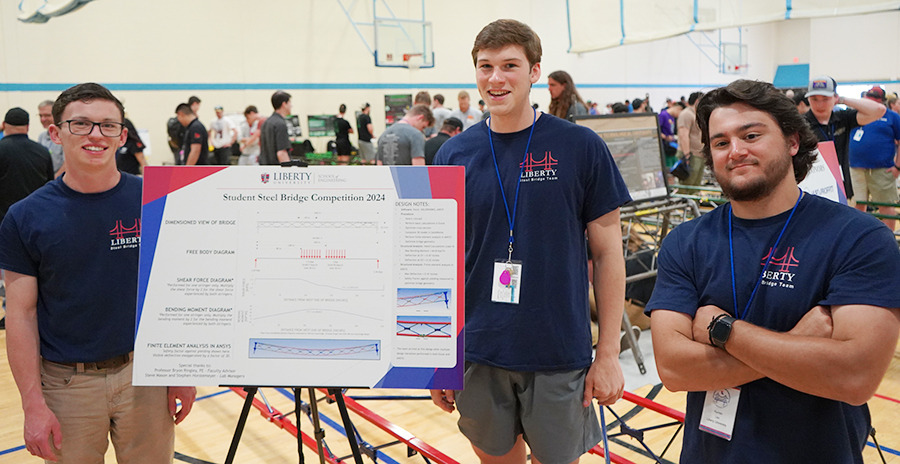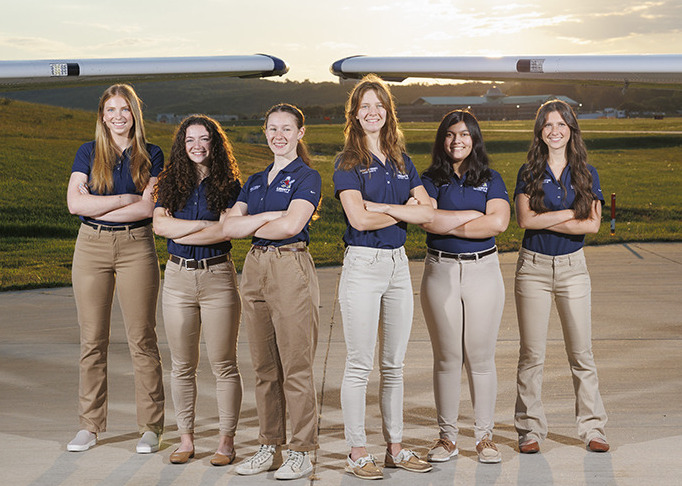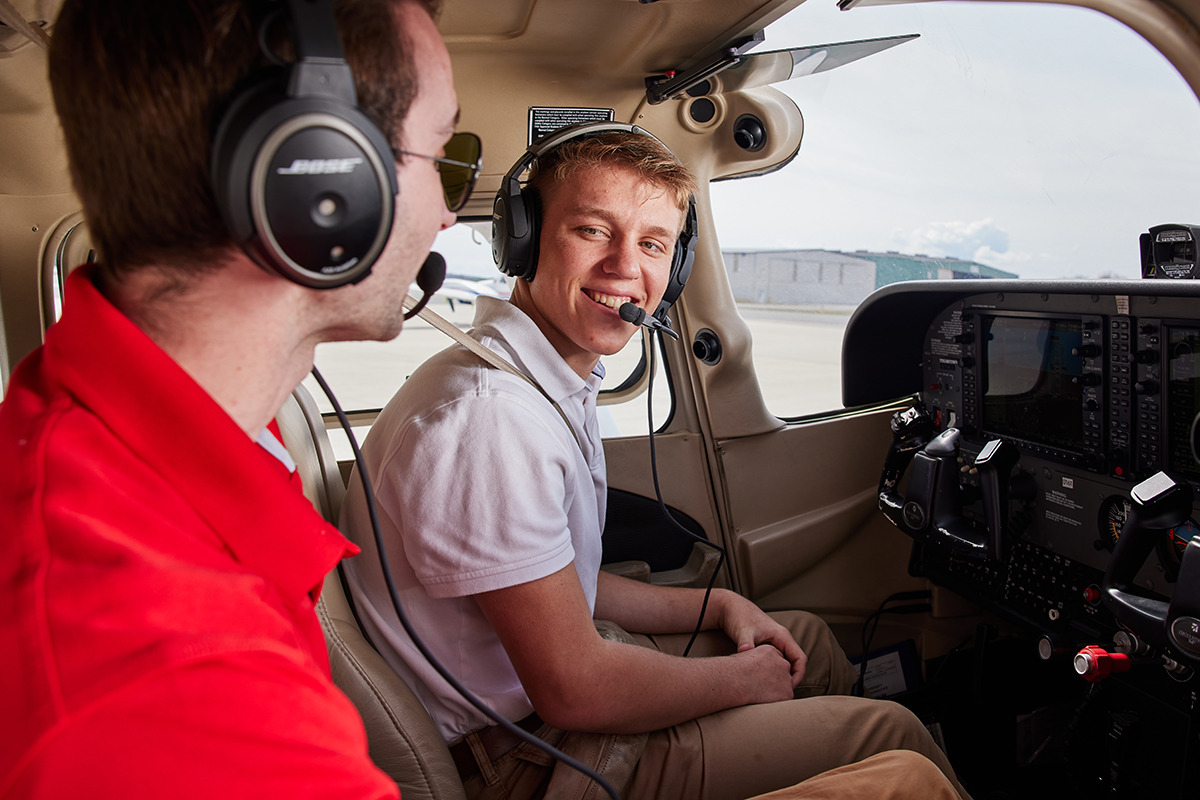Search News Archives
Filter News Articles
Additional Navigation
Liberty steel bridge team strengthens design for its first nationals in Louisiana
June 7, 2024 : By Ted Allen - Office of Communications & Public Engagement
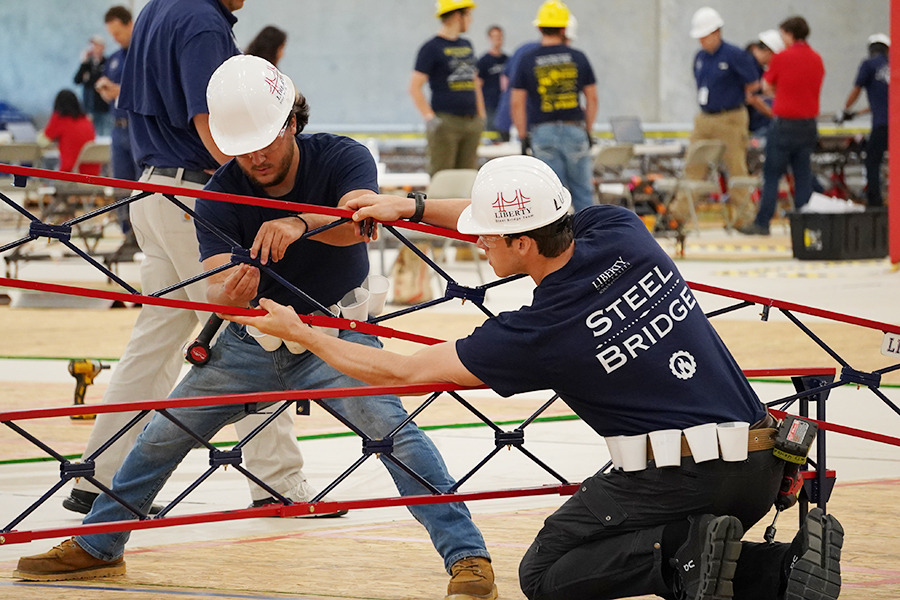
Liberty University’s second-year Student Steel Bridge Competition team attended its first national finals May 30-June 1 at Louisiana Tech University in Ruston, La.
One of only three newcomers at SSBC nationals, Liberty’s team placed 26th out of 49 in the national field. Liberty qualified for nationals by placing second out of eight teams at the regional competition held at Virginia Tech in late March. More than 200 teams entered regional competitions across the United States, with a few from Mexico and Canada as well as Puerto Rico.
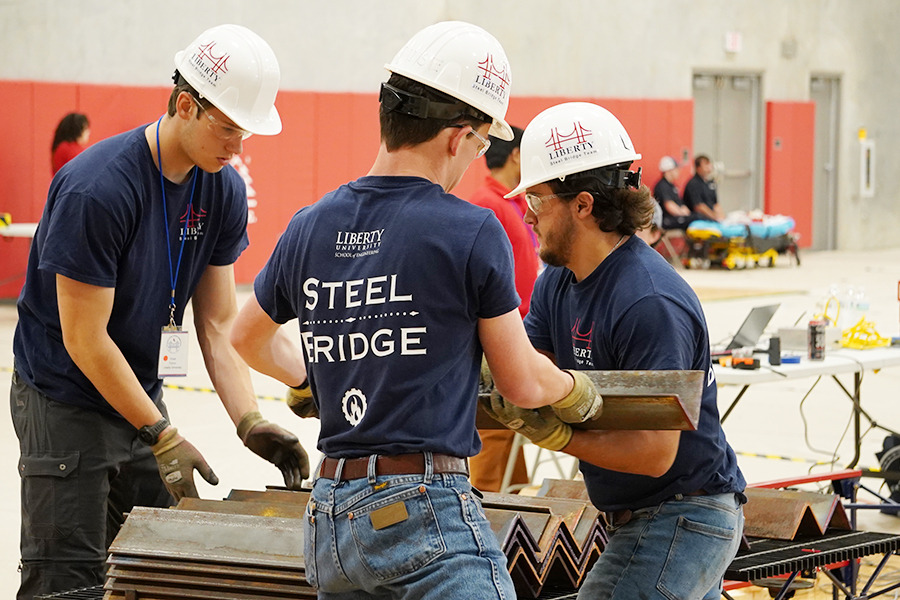 The mission of the SSBC, as stated on its website, is “to challenge students to extend their classroom knowledge to a practical and hands-on steel-design project that grows their interpersonal and professional skills, encourages innovation, and fosters impactful relationships between students and industry professionals.”
The mission of the SSBC, as stated on its website, is “to challenge students to extend their classroom knowledge to a practical and hands-on steel-design project that grows their interpersonal and professional skills, encourages innovation, and fosters impactful relationships between students and industry professionals.”
Four Liberty team members competed at nationals: rising senior Joel Harkness (the team’s captain), rising senior Hunter Lee, rising junior Chad Parker, and rising sophomore Logan Grasser, the team’s project manager. The 18-member team is made up entirely of civil engineering students. Assistant Professor of Civil Engineering Bryon Ringley serves as faculty advisor. The team is assisted by School of Engineering lab managers Stephen Horstemeyer and Steven Mason.
Rising senior Richard Snyder, who serves as design lead, conducted much of the structural analysis for the team with knowledge he gained from his research with Professor Hyunjoong Kim.
Grasser noted that the guidelines for the bridge design vary from year to year.
“Last year’s bridge design was to be 25 feet in length and span up to 4 feet in height while this year’s was 20 feet long and only 2 feet off the ground, without a top truss,” he said.
The national competition challenged the participants to design and build a 1:10 scale bridge as a feasibility study for a non-invasive pedestrian bridge constructed over a man-made river on a new disc golf course in nearby Lincoln Parish Park.
Before traveling to nationals, the designers and builders made two primary modifications to their 20-foot-long, 3.5-foot-wide structure.
The team redesigned the footers and cross-bracing to remove nearly 25 pounds of weight from the project, which helped it to place second in the Lightness category at an overall weight of 208.8 pounds. They also painted the bridge in Liberty colors of red and blue, helping to raise it to a seventh-place ranking in the Aesthetics category.
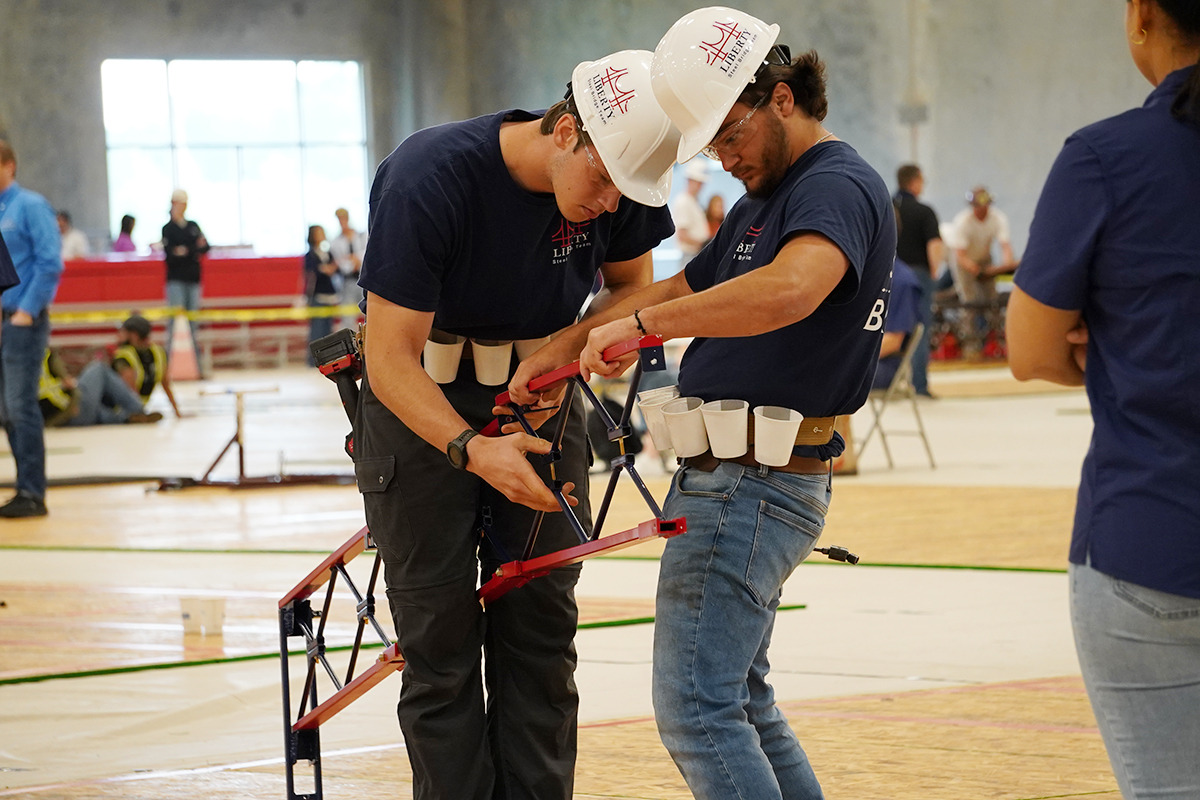
Virginia Tech was the overall winner in the Aesthetics category and placed seventh overall. The overall ranking is based on total calculated cost, including weight, construction time, number of builders, and deflection.
“The whole process is a scaled-down version of an actual project,” Grasser said. “We were trying to design something beautiful (and functional) with the goal of balancing all of the design criteria to achieve the lowest possible cost.”
Liberty’s bridge was rated 25th in the Stiffness category after sustaining only 1.74 inches of aggregate deflection when 2,500 pounds of weight was placed upon it, which was the main specification of the project.
With three builders, the team constructed the bridge in 20 minutes and 48 seconds, ranking 38th in construction speed. Liberty also ranked 13th in its projected Cost Estimate, 19th in Efficiency, and 29th in Economy.
[Complete results broken down by category are available online.]
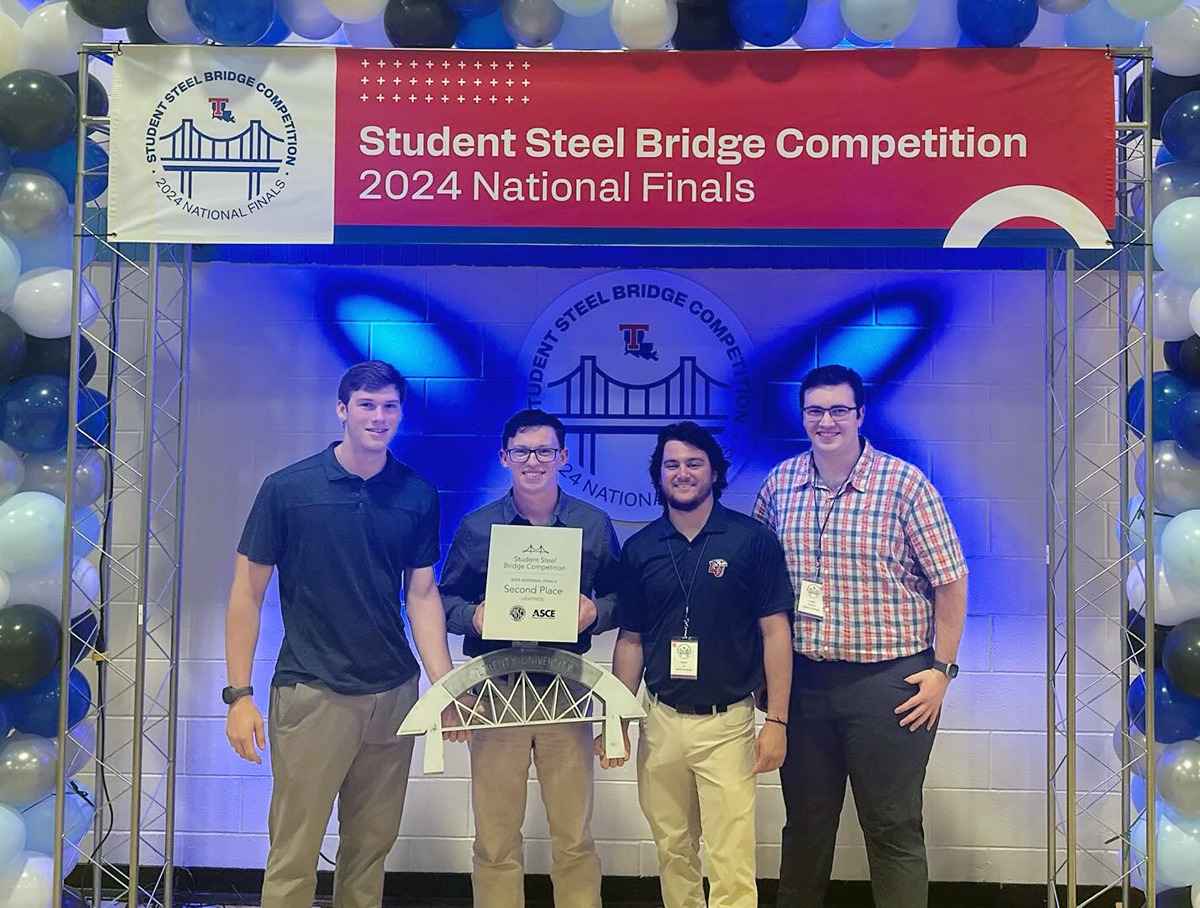
Grasser, who also serves as treasurer of Liberty’s chapter of the American Society of Civil Engineers, worked with local, regional, and national businesses to help raise the $7,000 needed for competition team resources as well as another $5,000 for the trip to Louisiana. In the process, he helped establish contact with several potential sponsors and donors as well as potential internship locations for future team members.
This summer, Harkness is practicing site design and Lee is working as a geotechnical technician for their internships at Hurt & Proffitt, Inc., a local civil engineering firm. Parker is working in construction near his hometown in Chicago.
Grasser is looking forward to incorporating lessons learned from nationals in preparation for next year’s regional competition at West Virginia Institute of Technology in Beckley, W.Va., with hopes of qualifying for the 2025 national finals at Iowa State University.
“It was really a great experience to see civil engineering programs at a very high level and the different perspectives teams took into the design process,” Grasser said. “To see the different design philosophies will help us as we start our design for next year.”
Rules and specifications for the 2025 competition will be released in September. Liberty is scheduled to host regionals in 2032. The steel bridge team is one of several competition teams offered through the School of Engineering.
